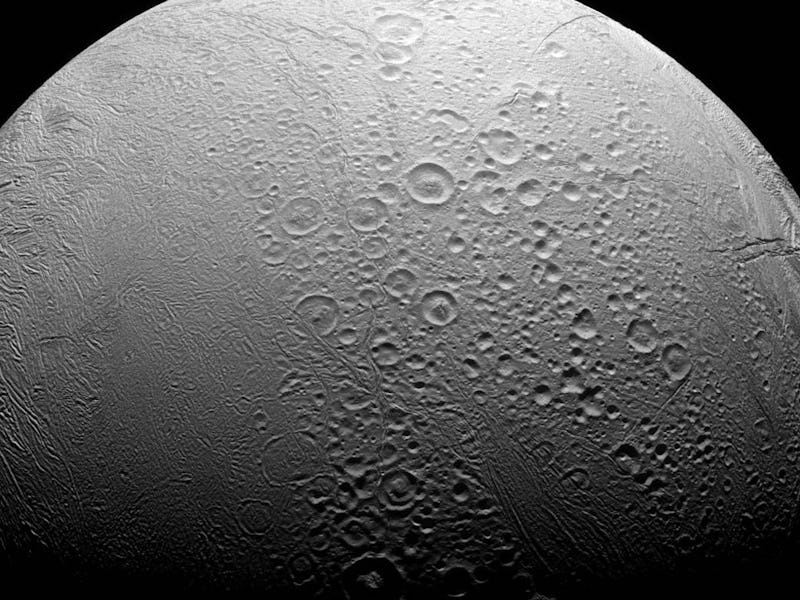
Saturn’s moon Enceladus has been the talk of the astronomy community for quite some time. The cratered surface indicates a pummeling of asteroids and other space dust over time, which tells scientists there definitely isn’t an atmosphere protecting it. But, the wrinkles and large wisps that seem to paint brushstrokes on the surface — as viewed in this new photo taken by NASA’s Cassini probe — are illustrative of something much more compelling.
According to NASA, these wrinkles were most likely formed by geyser-like eruptions in the moon’s south pole. When the plumes spew, they smooth over and erase any craters. This feeds the notion that Enceladus does indeed have ice, but also the idea that just below the surface there may be a warmer, wetter world that we only get a glimpse of when the geysers explode.
If this is true, the moon may be harboring extraterrestrial life species just under its crust. Of course, there is no telling how cold the underworld may be, especially because the surface is around negative 300 degrees Fahrenheit, but the hot geysers may make it a little more habitable down there.
Does this icy moon really contain life beneath its surface?
Other data suggests that the geysers are spitting out more than just water, including propane and methane. All of these clues have gotten scientists particularly excited about getting a closer look at Enceladus.
“We just need to fly there and collect samples,” Carolyn Porco, a leader of the imaging science team for the Cassini mission, told Inverse back in April 2016. “All we have to do is build something that will go there and pick some stuff up.”
Unfortunately, though, there is currently no mission in place to send a spacecraft to Enceladus to collect samples. But, scientists are remaining hopeful that in the near future, we will finally prove that we are not the only living creatures in the universe.